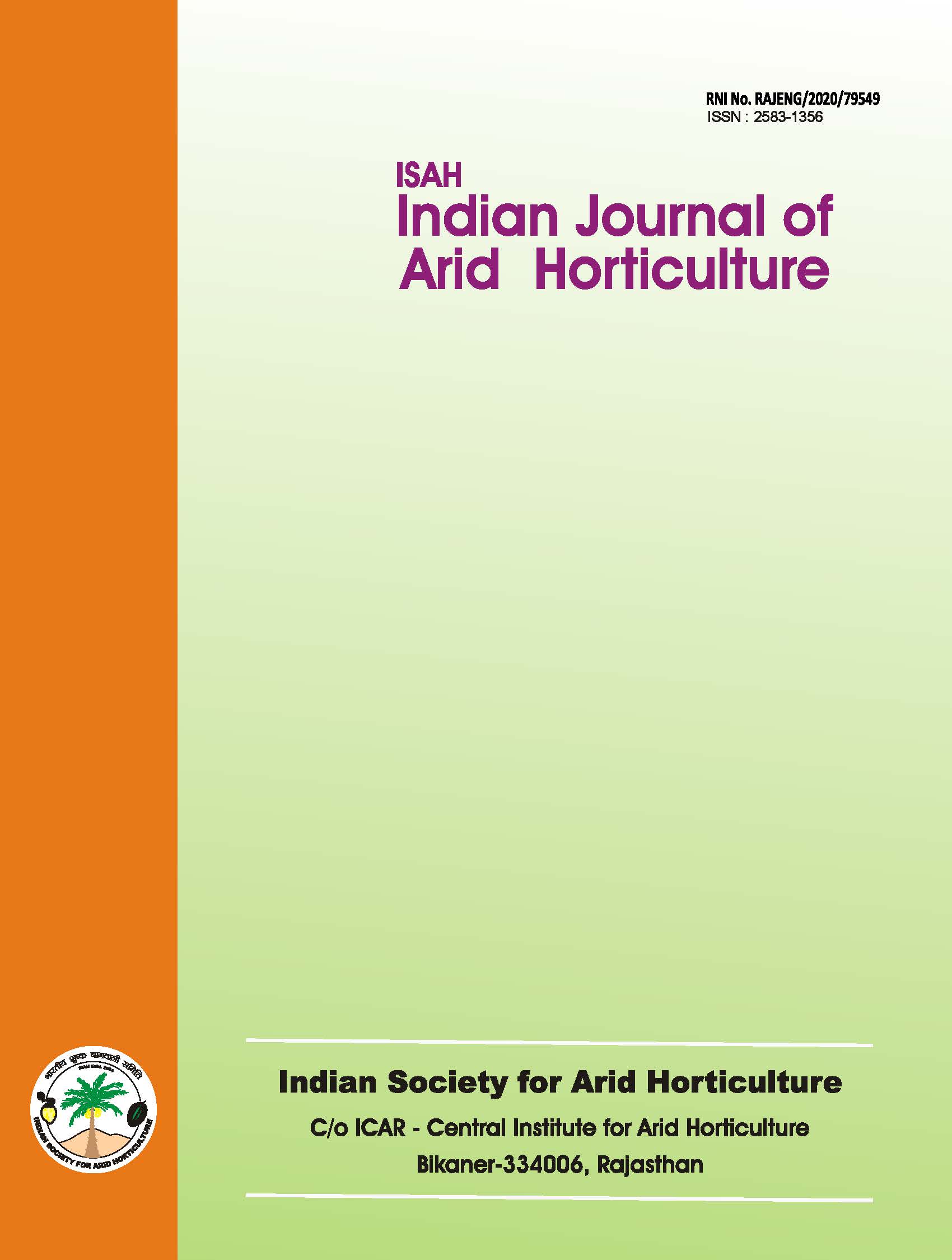Efficacy of different fungicides against Ascochyta pisi causing Ascochyta blight of pea under laboratory conditions
Keywords:
moderate, polycyclic, blight, crops, pathogenAbstract
Pea occupies an important position amongst the vegetable crops of India and is one of the few crops that can be successfully grown during the winter season in In- dia. However, Ascochyta blight caused by Ascochyta pisi Lib. is responsible for substantial yield losses in pea to the tune of 30-75 per cent under favourable conditions for dis- ease development (Roger and Tivoli, 1996). The disease is polycyclic and can develop rapidly during periods of wet weather and moderate temperatures.Downloads
References
Kaiser, W. J. 1972. Occurrence of three fungal diseases of chickpea in Iran, FAO Plant Protection Bulletin 20:74-78.
Khan, A. A. and Khan, R. U. 2006. Management of Macrophomina leaf spot of Vigna radiata by fun- gicides. Annals of Plant Protection Sciences 14: 258-259.
Roger, C. and Tivoli, B. 1996. Plant Pathology 45:518-528. Bashir, M. and Ilyas, M. B. 1983. Chemical control of gram blight. Pakistan Journal of Agricultural Sciences 20:152-158.
Srivastava, K. C. and Mishra, C. P. 2008. Cultural and chemi- cal control of blight of urd bean. Annals of Plant Protection Sciences 16: 139-142. Vincent, M. 1947. Distortion of fungal hyphae in presence
of certain inhibitors. Nature 96: 596.
S. K. Maheshwari, N. A. Bhat, T. A. Shah and A. K. Shukla, Indian Journal of Arid Horticulture, 2009 4(2): 107-108

